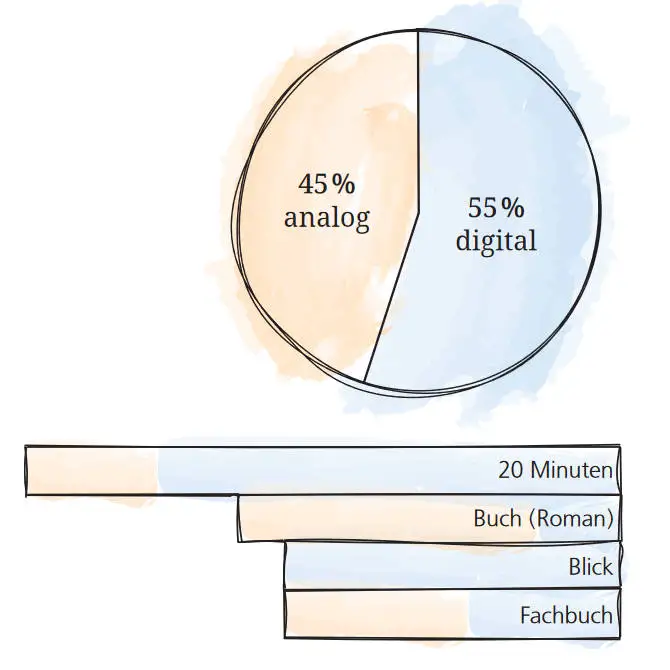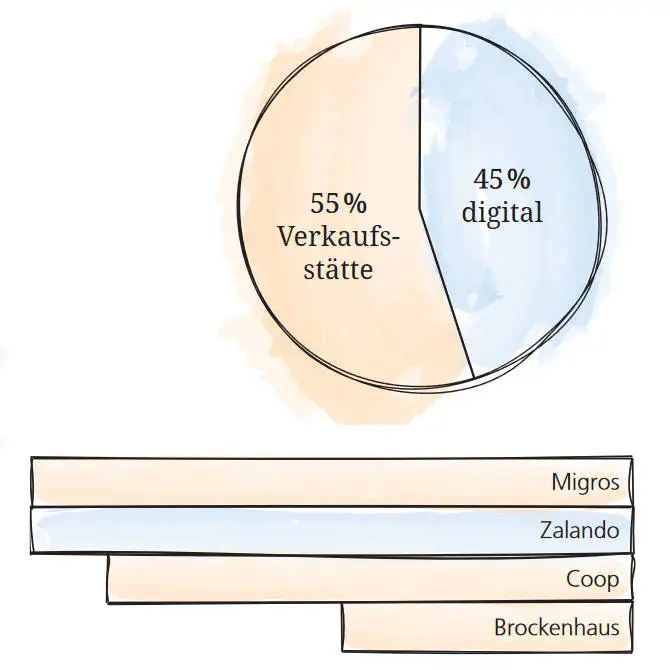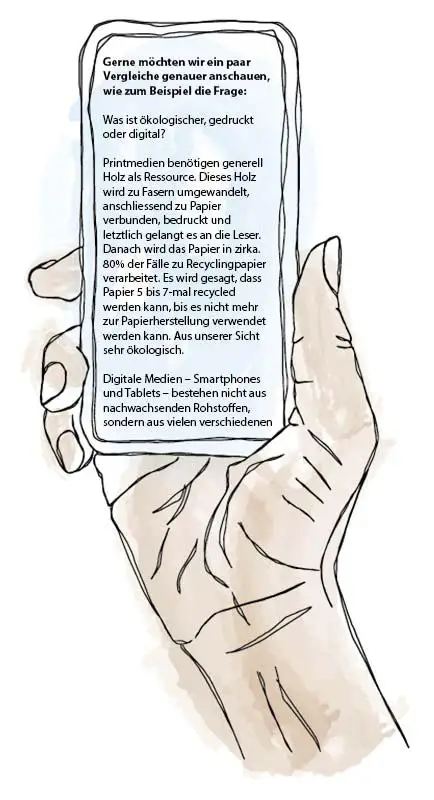

Kim Wohlgemuth
Polygraph apprentice, co-author

Thierry Weissbaum
Apprentice KV, co-author
Which is more ecological, printed or digital?
Print media generally require wood as a resource. This wood is converted into fibers, then combined into paper, printed and finally reaches the reader. The paper is then cut into approx. 80% of cases processed into recycled paper. It is said that paper can be recycled 5 to 7 times until it can no longer be used to make paper. Very ecological from our point of view.
Digital media – smartphones and tablets – are not made from renewable raw materials, but from many different metals and rare earths such as tantalum, gold, palladium, silver, cobalt and copper. Tantalum, for example, is extracted from coltan ore. The largest deposits are in Central Africa. Rainforests are cleared and the ore is mined under inhumane conditions and using child labor to obtain the rare and precious metal. The recycling rate for electrical appliances is around 45%. Very unecological from our point of view.
Another comparison we have made is ordering a product.
We used to flip through a catalog, fill out the order card, stick a stamp on it and drop it in the nearest mailbox. The package was delivered after 5 to 7 days. They took their time and thought carefully about what to order.
Survey in the Staffel Medien AG


Who reads digitally, who in print?
According to a survey in Switzerland, 95% of 50- to 79-year-olds stated that they had read a printed newspaper in the last three months. Among 15 to 29-year-olds, the figure was only 86%. There are indeed generational differences.
Printed newspapers and television are more likely to reach the older generation. Radio consumption is also higher among the older generation, while social media, video and music streaming services are increasingly used by younger people.
We believe that the right mix of printed and digital makes all the difference.

Would you like to optimize your market presence?
We offer you a wide range of services to meet your needs. It doesn’t matter whether you need printed or digital advertising material or a combination of both. Our experts will guide you through the entire process. They help you to develop a campaign that delivers convincing results. Get in touch with us today and let’s take the first steps together.
* Mandatory fields
Information on data protection, revocation, logging and the performance measurement covered by the consent can be found in our data protection declaration

Ralf Weissbaum
044 289 89 10
